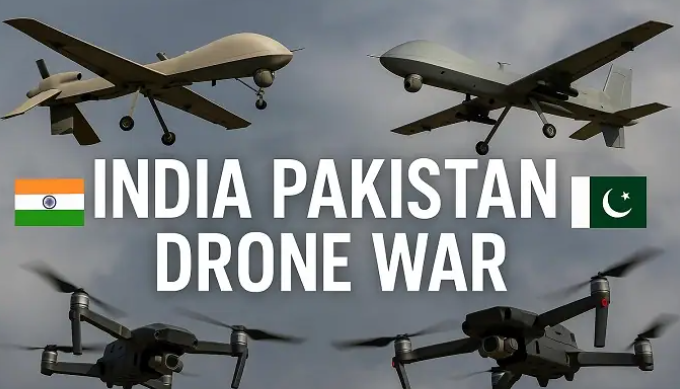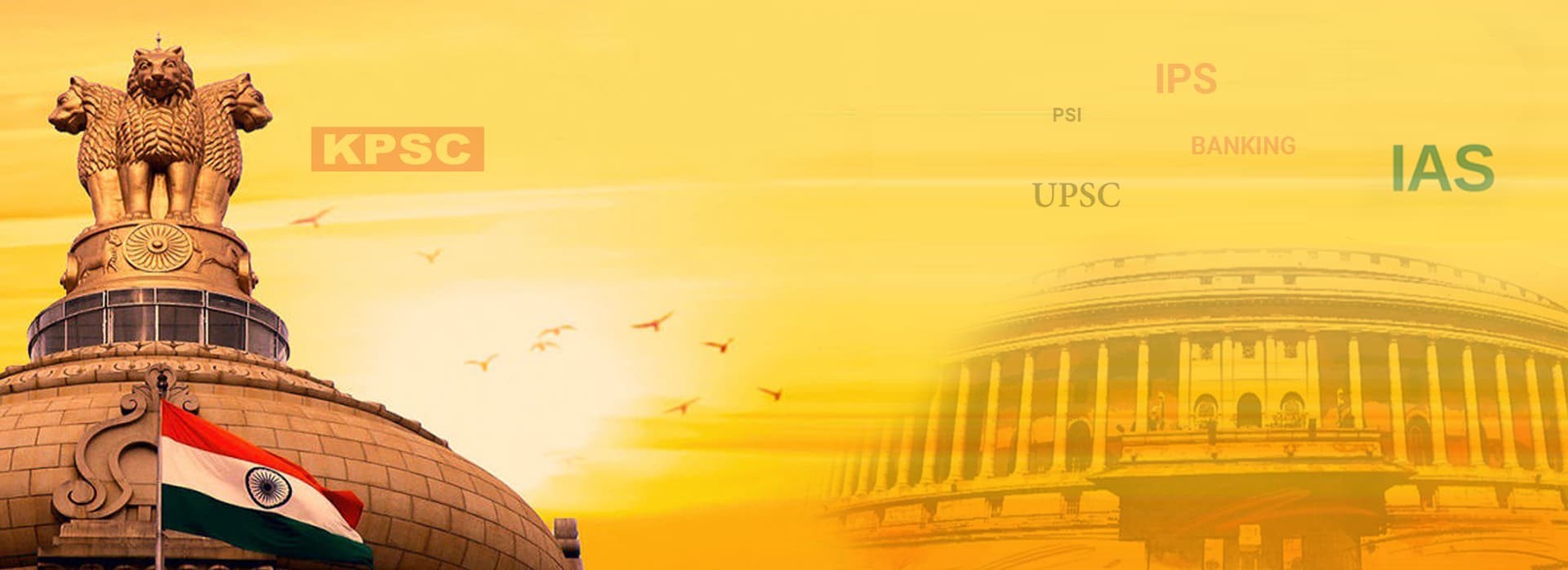Future of Border Wars
Syllabus
GS 3: Internal Security
Why in the News?
India’s recent limited conflict with Pakistan exposed regional instability, growing technological warfare, and the urgent need for India to strengthen space-based surveillance to counter rising threats from Pakistan and China. This incident has brought defense news India to the forefront of national discourse, highlighting the ongoing India-Pakistan border tensions.

Introduction
- India’s recent military conflict with Pakistan has raised vital concerns about regional security, technological warfare, and the growing role of space and drone strikes in modern combat. This incident has also reignited discussions about India vs China military capabilities and overall military power comparison in the region.
- Despite India’s military edge, persistent threats from Pakistan and the possibility of a two-front war with China highlight urgent gaps in India’s preparedness, especially in space-based capabilities and UAV technology.
Persistently Hostile Neighbour
- Pakistan continues to provoke India periodically, despite being defeated in every direct conflict since Independence, as evidenced by the Indo-Pak wars history.
- Its approach of “bleeding India by a thousand cuts” remains unchanged, perpetuating the India-Pakistan rivalry.
- India’s secular and democratic identity poses a fundamental ideological threat to Pakistan’s religious nationalism.
- As India rises globally, now the fourth-largest economy, Pakistan descends deeper into political instability and military dominance, often resulting in Pakistan war news dominating headlines.
Pakistan’s Military-Religious Identity
- Today, Pakistan is no longer a functioning democracy in the true sense.
- Civilian Prime Minister Shehbaz Sharif merely stands in for his brother Nawaz Sharif, who is legally barred from contesting elections.
- Pakistan Army remains the true power center, undermining democratic structures and controlling Pakistan nuclear capabilities.
- Recently, Army Chief Gen. Asim Munir, now promoted to Field Marshal and serving as the chief of army staff Pakistan, openly declared that Pakistan is not a democracy but a religious state.
- He claimed that Pakistan is one of only two states in history based on the “Kalima,” the other being the Riyasat-e-Medina.
- He emphasized ideological opposition to India, saying Pakistan differs from Hindus in every aspect: customs, religion, traditions, and ambitions.
- He reiterated that “Kashmir is Pakistan’s jugular vein,” reigniting concerns over future escalations in the Kashmir dispute.
Silence of the World Order
- The global reaction to the Gaza crisis vs. the Ukraine war reveals geopolitical hypocrisy.
- While Gaza’s devastation meets global silence, Ukraine sees global diplomatic and financial engagement.
- This inconsistency reflects the grim reality that the West values European crises more than Asian ones.
- The recent India-Pakistan conflict saw the West intervening quickly, not out of concern for peace, but due to strategic interests.
U.S. Strategic Interest in Pakistan
- The U.S. claimed it played a role in de-escalating the India-Pakistan conflict, despite India’s denial.
- Observers suggest that the U.S.’s real interest lies in Pakistan’s rich reserves of critical minerals, like lithium, copper, and rare earth elements.
- These resources have grown in geopolitical importance due to the ongoing technological revolution.
- Just as Ukraine bartered its critical minerals for U.S. support, Pakistan’s military may now feel indebted to U.S. diplomacy.
- Thus, external peace-making efforts may be more about resource acquisition than regional stability.
Emerging Patterns of Warfare
- The latest India-Pakistan conflict was limited in duration but rich in technological experimentation, showcasing advancements in drone warfare and precision strikes.
- Both nations showcased advanced unmanned aerial vehicles (UAVs), air-defence systems, and electronic warfare tactics.
- Pakistan used Turkish Songar drones and Chinese J-10C fighters, while also reportedly deploying Shahpar drones and Burraq drones.
- India responded with Kamikaze drones, indigenous drone systems, and multi-layered air defences, including the use of army drone units and loitering munitions.
Drone and Air Combat Innovation
- The airspace witnessed large-scale use of expendable reconnaissance and strike drones, including Heron drones and Harop drones from India’s side.
- This signifies a shift from traditional to drone-centric, low-cost, high-intensity warfare.
- There’s speculation, especially from Pakistan and China, that Pakistan successfully integrated Chinese fighter jets and Pakistani radar systems.
- However, these claims remain unproven and likely exaggerated for propaganda purposes.
Superiority of Indian Air Defence
- India effectively used a mix of:
- Aakash Quick Reaction Surface-to-Air Missiles (QRSAM)
- Russian S-400 air defence systems
- Israeli-Indian Barak systems
- These layered systems gave India complete aerial cover during the conflict, effectively countering threats from the Pakistan Air Force.
- India did not need to deploy the BrahMos missile, its most advanced weapon jointly developed with Russia.
- Pakistan has no effective counter to the BrahMos system, underlining India’s superior offensive capability.
Importance of Escalation Dominance
- One key lesson from the conflict: success depends on how fast a nation can achieve “escalation dominance.”
- India currently enjoys an advantage over Pakistan in this regard.
- This dominance is built on rapid deployment, layered air defence, and integration of technology across units.
- However, this advantage may not be permanent, especially with shifting alliances and arms transfers in the region.
Proxy Wars and Global Arms Competition
- The conflict was closely watched by global arms manufacturers.
- It served as a real-time testing ground for comparing advanced weapons:
- Rafale fighters (France-India)
- J-10C jets (China-Pakistan)
- The focus was less on fighter capabilities and more on the efficiency of the “kill chain”, the full process from detection to neutralization.
Growing Threat of Two-Front War
- A two-front war scenario involving both Pakistan and China remains India’s most serious strategic concern.
- While India’s military power is sufficient to overpower Pakistan alone, combining China’s capabilities changes the equation.
- Coordinated attacks would require India to stretch its defence across two vast borders, potentially leading to cross-border attacks.
India’s Space-Based Deficiency
- The most significant drawback revealed is India’s lack of dedicated satellite systems for:
- Surveillance
- Early warning
- Military communications
- Space assets are crucial in modern warfare for real-time intelligence, coordination, and secure command structures.
- Unlike the U.S., China, or even Israel, India still lacks a full-fledged military satellite constellation.
- India is working to address this gap, with plans to acquire India predator drones to enhance surveillance capabilities.
Future of Technological Warfare
- Future wars will be decided by:
- Speed of response
- Technological superiority
- Information dominance
- The nature of modern combat is shifting from boots-on-ground to drones-in-air and satellites-in-space.
- Arms control treaties may become obsolete, as emerging conflicts outpace diplomatic restraints.
- Even nuclear deterrents may no longer prevent war, with newer, smaller tactical nuclear weapons under quiet development globally.
- The role of anti-aircraft guns and air-to-air engagement tactics will evolve to counter advanced drone threats.
India’s Path Forward
- India must acknowledge the rapid militarization of space and its vulnerabilities therein.
- Priority should be placed on:
- Launching dedicated military satellites
- Expanding cyber and electronic warfare capabilities
- Creating command structures for space-based warfare
- India’s defence strategy must evolve from land-centric to multi-domain operations covering land, air, sea, cyber, and space.
- Efforts should be made to boost the drone industry in India to reduce dependence on foreign technology.
Conclusion
India must prepare for persistent threats from Pakistan and future two-front conflicts by strengthening its technological and space-based capabilities. A proactive, not reactive, defence strategy is essential to safeguard India’s sovereignty and global aspirations. The Indian armed forces, particularly the Indian Air Force, must continue to innovate and adapt to the changing landscape of warfare, including the increased use of army drones and other advanced military technology. As the drone industry in India continues to grow, it will play a crucial role in shaping the future of India’s defense capabilities and its ability to maintain peace in the region.
Source:The Hindu
Mains Practice Question
Evaluate the significance of space-based assets in modern warfare. What are India’s current shortcomings, and how can they be addressed to prevent future security breaches?






